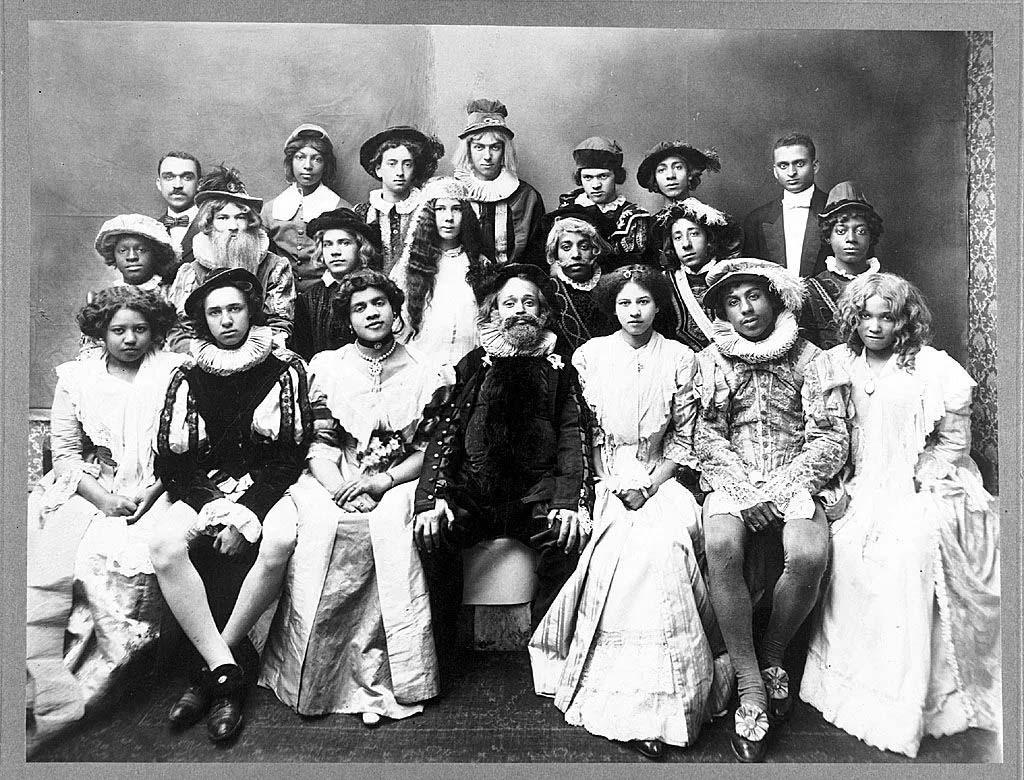Walk the halls of Lulu Vere Childers Hall on a weekday afternoon and you hear it all at once: the spill of a vocal warm-up through an open studio door, the staccato of tap shoes testing an eight-count, the focused hush of students marking a scene in the house of the Ira Aldridge Theater.
This density of sound is not just ambience; it is the soundtrack of a lineage. At Howard University, theatre arts have never been an extracurricular afterthought. It is a tradition that predates motion pictures, helped catalyze a national Black theatre movement, and still functions as a pipeline of artists, administrators, and ideas into stages and screens worldwide.
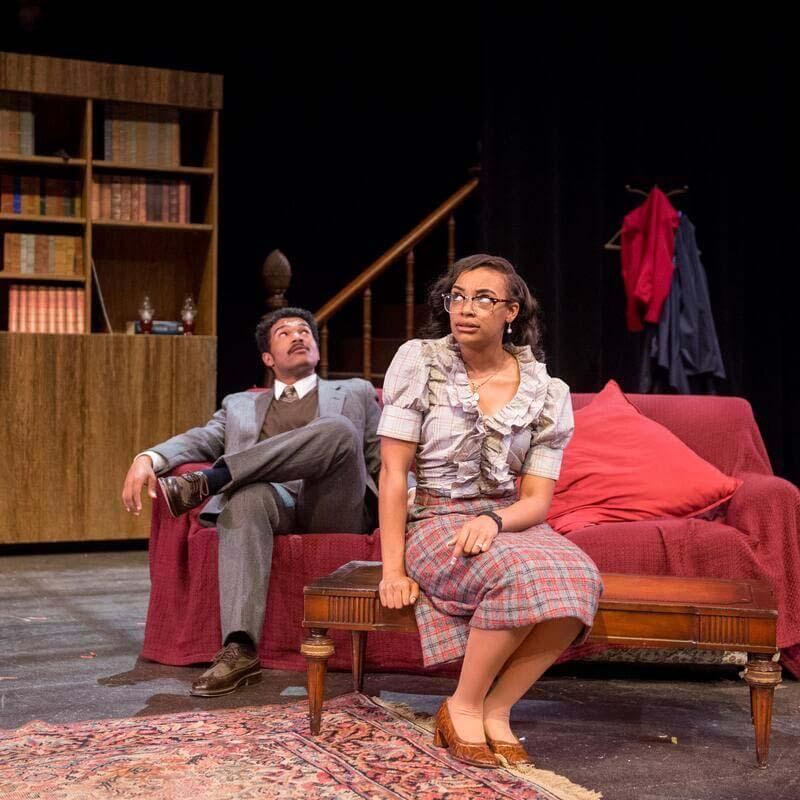
“From the early curricular inclusion of theatre arts to the box office success of Chadwick A. Boseman (BFA ’00) in ‘Black Panther,’ each generation of Howard faculty, students, and staff dedicated to Theatre Arts has made major cultural contributions to the American landscape and the global Black liberation movement,” said Nikkole Salter, MFA, an alumna of the theatre program and the current chair of the Department of Theatre Arts. “The Howard Players, through their international tours, demonstrated early on that cultural ambassadorship is a form of foreign diplomacy, while the university itself recognized the power of performance training to cultivate the communication skills essential to leadership, advocacy, and change. This creation, innovation, and stewardship of the Black dramatic narrative is the legacy we inherit, transform, and pass on.”
The Roots: Speech, Story, and the Birth of the Players
Howard’s present-day Department of Theatre Arts (formerly the Department of Drama) can trace its ancestry to the university’s humble beginnings. By the 1870s, oratory contests were annual events; in 1874, the university began awarding academic credit for public speaking, elevating performance from pastime to pedagogy. Coralie Franklin Cook, an early pioneer in the field and a Howard faculty member by 1899, expanded instruction beyond recitation into breath, posture, tone, and inflection, treating voice and body as instruments worthy of serious study.
The first modern theatre cohort emerged under English instructor (and future legendary scientist) Ernest Everett Just, who organized the College Dramatic Club in 1909. A decade later, the club and the university’s ambitions were reimagined by dramatist and educator Thomas Montgomery Gregory. In 1919, Gregory formalized a credit-bearing Dramatic Art curriculum and renamed the troupe the Howard Players, making Howard one of the nation’s most vital incubators of authentic Black drama between the wars.
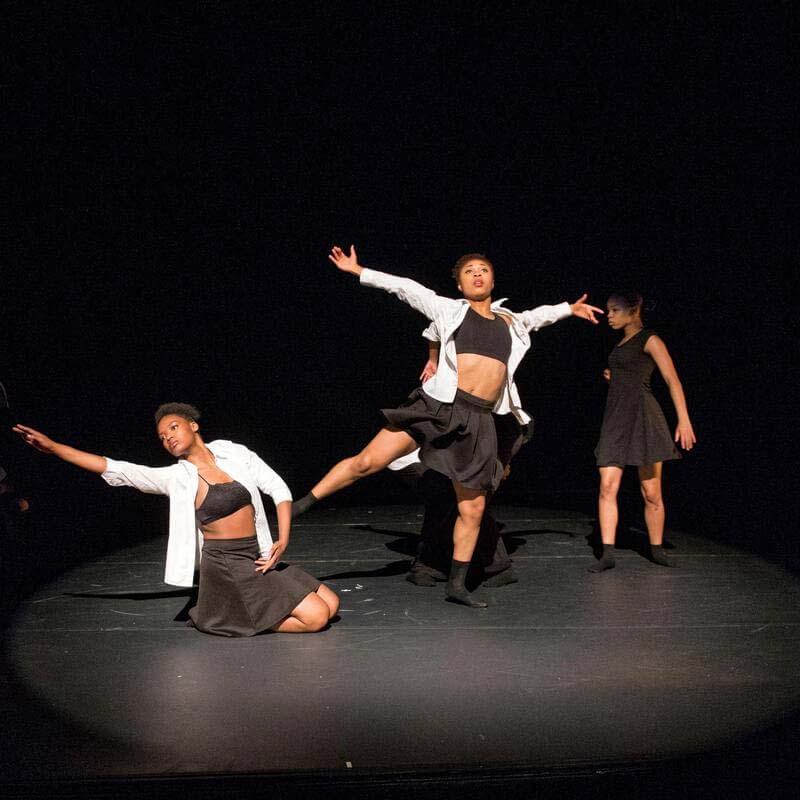
Under Gregory and his successors, the Players specialized in “plays of Negro life,” commissioning and staging new work from students and contemporary writers. Their credits chart an astonishing map: Eugene O’Neill’s “The Emperor Jones” with Charles Gilpin in his signature role; early productions of works by James Baldwin (“The Amen Corner”) and Owen Dodson; and a repertoire spanning Ibsen, Chekhov, and original African diaspora reinterpretations like “Medea in Africa.” This was an institution training actors and technicians, but also a laboratory where Black aesthetic possibilities were iterated in public.
“The founders of Howard’s Department of Drama understood, with remarkable foresight, that narrative was not just art — it was a unifying and defining force for Black identity,” said Salter.
“Surrounded on campus by the work of thinkers like Alain Locke, whose vision of the New Negro demanded new dramatic expression rooted in the specificity of an African American world view, and sociologists such as Coralie Franklin Cook’s husband George (himself a professor and dean at Howard) who were shaping the study of our collective life, they knew that we could not afford to let others tell our story for us,” she added. “The Howard Players became a platform where rigorous craft met a reclaimed and evolving Black aesthetic, ensuring that our stories would be told by us, in our own voices, for the world to hear.”
Touring Ambassadors and a Modernist Home
By mid-century, Howard’s theatre community looked outward without losing its center. In 1949, the Players became the first American university theatre group invited to tour Europe, carrying two productions across Norway, Sweden, Denmark, and Germany as de facto cultural diplomats in the early Cold War. That milestone anticipated a long tradition of international exchange.
Back on campus, the university consolidated its arts units (Drama, Art, and Music) into a College of Fine Arts that moved into Childers Hall in 1960. Adjacent to it rose the Ira Aldridge Theater, completed in 1961 and named for the 19th-century Black Shakespearean actor celebrated across Europe. The theater’s curved, limestone-clad Art Moderne exterior was designed by two giants of Black architecture, Hilyard Robinson and Paul R. Williams, a clear manifesto that Black artistry would be housed in facilities equal to its ambition.
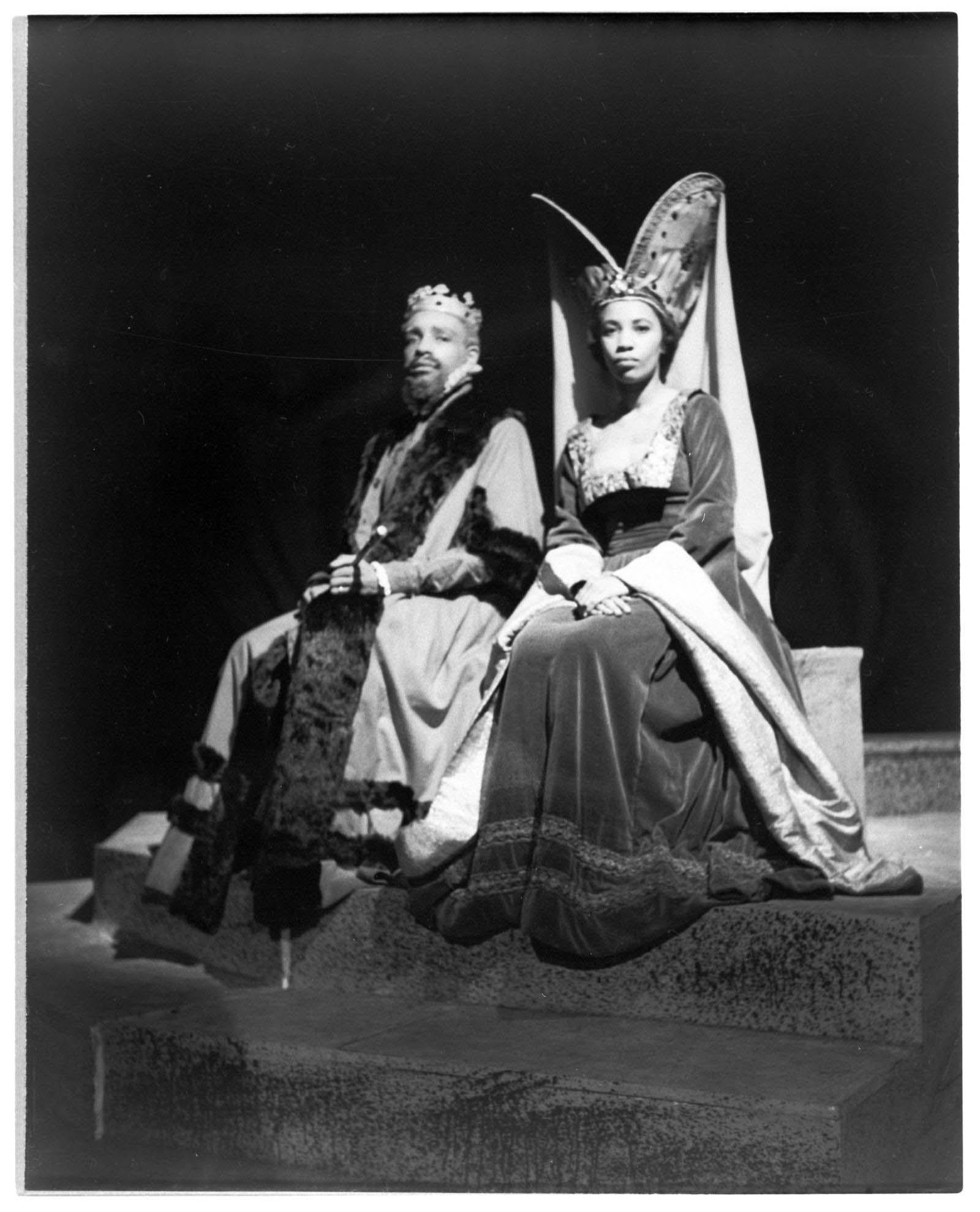
“The founders of Howard’s Department of Theatre Arts understood that the theatre was equally vital in service to global liberation and to local community needs. While the Players carried our stories abroad as cultural diplomats, they also ensured that D.C. would have a world-class space for Black narratives,” Salter said. “When Washington Post critic Richard Coe declared the Ira Aldridge Theater ‘one of the finest facilities in Washington,’ it affirmed what our founders already knew: that Black creativity deserved a stage of equal stature to its vision and power. Even now, as the virtual space grows in the public zeitgeist as a viable arena for performance, the brick-and-mortar Ira Aldridge Theater continues to anchor and support generations of artists.”
Children’s Theatre, Dance, and the Widening Circle
Howard’s theatre story also includes catalytic experiments that have become tradition. In the early 1970s, the department seeded a children’s theatre initiative that grew into the Howard University Children’s Theatre (HUCT), which won the national Winifred Ward Prize as the most outstanding new children’s theatre in 1974. Meanwhile, dance, which was initially a minor only, was approved as a major within Theatre Arts by 1993. The takeaway is clear: at Howard, the stage has always been bigger than a proscenium; it is a social institution tasked with meeting audiences, young and old, where they are.
“Long before Howard formally declared its mission to create leaders prepared to drive change and solve problems in every sector of society, Theatre Arts had already been living that practice,” Salter attested. “Through its comprehensive programs — including theatre education, directing, playwriting, acting, musical theatre, theatre technology, and theatre arts administration — along with its symposia, conferences, community classes, summer camps, and seasons of shows, the department served its community as a means of nurturing creatives prepared to steward, innovate, govern, protect, and advance the cause of Black humanity.
“Our work has always affirmed that the stage is more than a proscenium — it is a civic institution essential to the health and well-being of society,” she continued. “Today’s departmental vision simply codifies what we have always been: a hub for the Black dramatic narrative, a haven for its legacy, and a preeminent training ground for aesthetic and cultural activism.”
The Boseman Era
Institutional structures change, often because artists demand it. In 1998, the College of Fine Arts was absorbed into the College of Arts and Sciences, a decision that galvanized students and alumni to organize for a return to a standalone arts college. Their long advocacy, in which alumnus Chadwick A. Boseman played a visible role, culminated in 2021 with the historic reestablishment of the College of Fine Arts — renamed the Chadwick A. Boseman College of Fine Arts (COFA) under the leadership of Wayne A. I. Frederick, M.D, MBA, the 17th president of Howard. Phylicia Rashad, a celebrated alumna, became the first dean of the revived college.
This renaissance is not merely nominal. It reorganized departments (Art, Music, Theatre Arts) under a shared banner and vision, with the university committing to facilities, curricula, and cross-disciplinary collaboration that match the scale of Howard’s cultural footprint. In 2025, COFA welcomed a new dean, Dr. Raquel Monroe, who arrived from The University of Texas at Austin with a mandate to expand opportunities for young Black artists in a changing industry.
“Dean Monroe’s leadership ushers in an exhilarating new chapter for the Chadwick A. Boseman College of Fine Arts,” Salter said. “Her commitment to fortifying infrastructure, expanding curricula, recruiting dynamic faculty, and deepening community and field partnerships positions the college to lead the fields of arts and culture. Through innovative interdisciplinary programming, she is embedding the arts into every facet of campus life and society, ensuring that Howard remains a preeminent incubator for creative leadership, cultural innovation, and the preservation and advancement of the Black dramatic narrative.”
Training for the Whole Field: From Stage Craft to Stage Leadership
Within COFA, the Department of Theatre Arts remains both traditional and boldly specific. Undergraduate concentrations in Acting, Dance, Musical Theatre, Theatre Technology, and Theatre Arts Administration train students for the entire ecosystem, not just the spotlight.
One offering signals how forward-looking the program is: Howard houses the only BFA Theatre Arts Administration program offered by an HBCU, benchmarking its curriculum against leading national programs so graduates can become the producers, general managers, fundraisers, and marketers who sustain the art. It’s a reminder that institutional power in the arts is not merely creative but also administrative, and that diversifying the back office is as urgent as diversifying the cast.
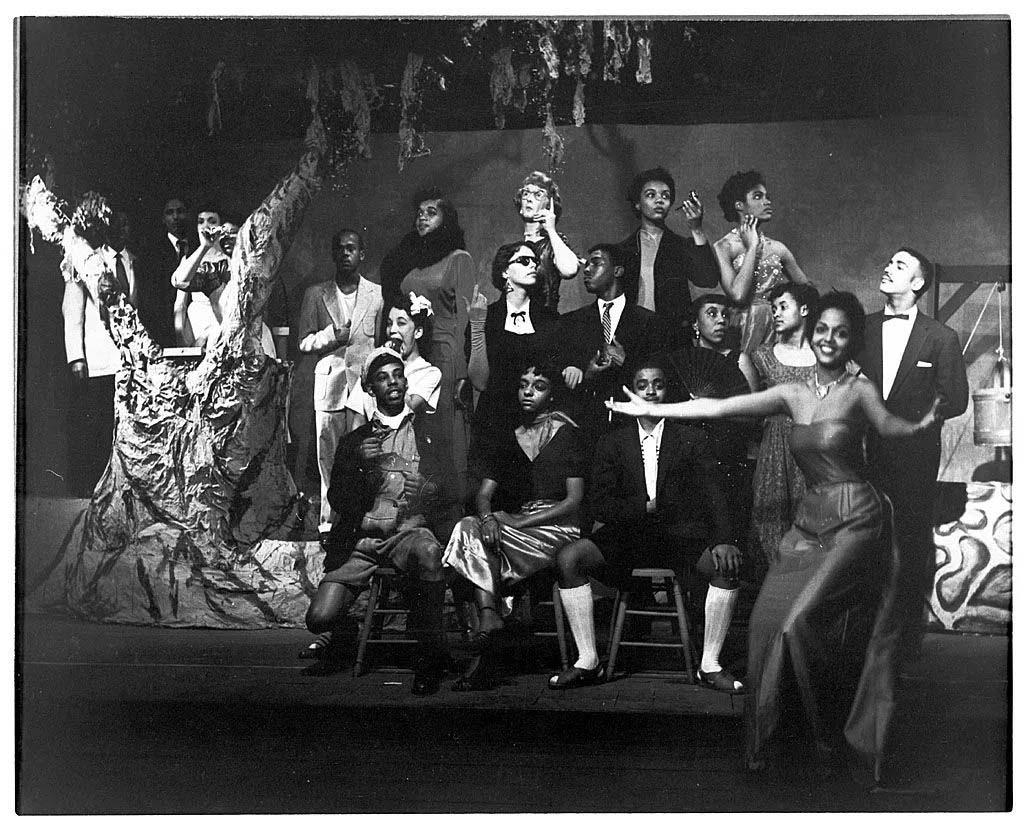
“While the Department of Theatre Arts honors the power and responsibility of those trained to be in the spotlight of our cultural leadership, we also understand cultural power in all of its creative practices across our programs,” Salter said. “At Howard, dramatic arts creatives are nurtured across the full ecosystem of the field — from acting, dance, and musical theatre to live design, production, and arts administration — because sustaining and advancing the art requires not only artistic brilliance but also strategic leadership. By cultivating executive thinkers, goal-setters, organizers, managers and producers, we ensure that African diasporic theatre thrives with equity, impact, and a distinctive cultural voice, both on stage and on the balance sheet.”
Partnerships That Stretch the Map
Howard’s theatre footprint extends into Washington’s professional ecosystem. The Creative Administrators Internship Program, launched with Arena Stage and now in its second year, places students from Howard’s Theatre Arts Administration Program inside one of the nation’s flagship regional theaters for hands-on training. Simultaneously, “Black Stage: Classical Canon,” produced with Shakespeare Theatre Company and aired on WHUT, showcases senior acting majors in classical repertoire, classrooms turning into broadcast stages, with mentorship from working artists. The university is also part of the New York Emmy Award® winning series “Dangerous Acts” in partnership with the landmark Lucille Lortel Theatre. These alliances are pathways into industry and platforms to rehearse leadership.
“D.C.’s status as the second largest market for American theatre strategically positions both the city and Howard’s Department of Theatre Arts for partnerships across the country and around the world,” Salter said. “Programs like the Creative Administrators Internship with Arena Stage, the Kankouran Dance Company, and ‘Black Stage: Classical Canon’ with Shakespeare Theatre Company and WHUT provide students with hands-on experience and mentorship locally. Collaborations with the Lucille Lortel Foundation — which produced the 2025 Emmy-winning ‘Dangerous Acts’ starring Phylicia Rashad — multi-city summer internship program with Wasserman Music, Complexions Contemporary Ballet, and the International Association of Blacks in Dance demonstrate our commitment to cultivating leadership, innovation, and equity nationwide. Our growing initiatives with emerging leaders in arts advocacy, including Arts Workers United and applied theatre with the university of Regina’s Centre for Socially Engaged Theatre in Saskatchewan, further extend Howard’s impact into global and community-engaged artistic practice.”
The Alumni Signal
If legacy needs proof, look to the alumni roll. Chadwick Boseman’s career, culminating in “Black Panther” and a posthumous canon, has come to symbolize Howard’s blend of training and purpose; his name now crowns the college that shaped him. Phylicia Rashad (BFA ’70) and Debbie Allen (BFA ’71), sisters whose careers traverse Broadway, television, dance, and educational leadership, also carry Howard’s imprint. Taraji P. Henson (BFA ’95) has been candid about how faculty support built her runway to a career spanning “Hidden Figures,” “Empire,” and beyond. Even renowned author Toni Morrison cites her time as a Howard dramatist as some of her most formative. The signal is generational: Howard artists lead and circulate influence, returning often as mentors, donors, and collaborators.
That circle continues in visible ways. In 2022, Anthony Anderson (BFA ’22) completed his “Long Walk,” earning the BFA he began decades earlier, joining a cohort that sees education not as a credential but as a commitment to craft and community. For the department, the annual BFA showcases in D.C. and New York formalize that passage from student to professional, placing young performers in front of agents, casting directors, and producers who already understand the Howard reputation.
“Howard’s alumni are living proof of the Department of Theatre Arts’ enduring impact. From Chadwick A. Boseman to Roxie Roker (BFA ’52), Ossie Davis, Richard Wesley (BFA ’67), Wendy Raquel Robinson (BFA ’89), Franchell “Frenchie” Davis (BFA ’14), Kamilah Forbes (BFA ’00), Susan Kelechi Watson (BFA ’99), Kathy Perkins (BFA ’76) and countless other luminaries — including many faculty alumni — generations of artists have not only carried Howard’s training into the world but have returned as mentors, collaborators, and catalysts for opportunity,” Salter said. “They create a feedback loop that sets standards and opens doors for current students, showing that at Howard, education is never just a credential — it is a commitment to craft, community, and the continued advancement of the Black dramatic narrative.”
Heritage and Horizon
What distinguishes Howard’s Department of Theatre Arts is a simple, radical premise: Black life is not niche material, it is a generative center for technique, theory, and innovation.
From the Players’ early productions to HUCT’s child-facing tours; from the Aldridge Theater’s modernist curve to the growth of dance as a major; from a season bill that can frame “A Doll’s House” alongside a Baldwin premiere to a curriculum that turns undergraduates into technicians, dramaturgs, producers, and performers — Howard’s theatre program builds artists who can both honor the canon and alter it.
Today’s department is also deliberately flexible. Students rehearse Shakespeare in the morning and devise new work in the afternoon; they intern at Arena Stage, produce for WHUT, and run lights at the Aldridge at night. Administratively, the reestablished college has created a home where Art, Music, and Theatre Arts can share resources, cross-pollinate, and speak with one voice to university leadership about space, staffing, and investment. It is arts education as institution-building.
“Howard’s Department of Theatre Arts cultivates students to achieve four key outcomes: scholarly inquiry, business acumen, creative proficiency, and access to the professional marketplace,” said Salter. “Our students and faculty advance the field through rigorous research and innovative praxis.”
“Faculty contributions — from Dr. Khalid Long’s groundbreaking work positioning him among premier August Wilson scholars, to Dr. Ofosuwa Abiola’s explorations of Afrikinesis as a framework for evaluating and researching African Diasporic dance, to professor Dominique Douglas Hendricks’ research chronicling case studies in change management within arts and culture institutions, to Ifanike Batts’ research bridging the cultural practices of Ifá and Isese into musical theatre movement, to Dr. James Ballard, III’s research in entertainment psychology, including IRB-approved studies on team chemistry and cohesion, to visiting professor Margo Fenley’s pioneering work in Intimacy Direction, to visiting director Professor Nicole Brewer’s work in anti-racist theatre, and to my own investigations into the craft, art, and spiritual practice of dramatic narrative performance — reflect a department-wide commitment to scholarship that is both rooted in heritage and oriented toward the horizon.”
Why Howard Theatre Still Matters
Artistic training is always a bet on the future. The Department of Theatre Arts trains its students to sustain careers in a volatile industry by preparing them for many roles and equipping them with durable competencies: interpretive skill, historical literacy, physical and vocal technique, collaborative discipline, critical inquiry, and administrative savvy. It’s a model designed for longevity, because Howard knows the story it’s telling is bigger than any one class or cohort.
But the deeper answer to “why Howard theatre?” is communal. The department’s mission explicitly centers the growth and development of the African diasporic experience on stage and in scholarship. That emphasis generates artists who see their work not just as employment but as a cultural responsibility and a civic practice, whether they’re helming a nonprofit, touring a musical, writing a new play, or teaching the next class of Bison to hit their mark and tell the truth.
“At Howard, we train artists to be active participants in the creation of dramatic narrative, shaping work that grows and reflects the African diasporic experience in ways that honor both individual vision and collective autonomy,” Salter said. “Our purpose is to cultivate creators who understand that theatre is more than the act of liquidating attention for marketing clients’ needs — it is a practice of cultural stewardship, civic responsibility, and the sustained evolution of Black life and storytelling.”
The Curtain Call, and the Next Cue
The simplest way to understand Howard’s intersection with theatre arts is to sit in Ira Aldridge during a student-run tech rehearsal. Watch as a senior stage manager calmly calls the show, an underclassman learns the choreography on short notice, a lighting board operator paints the scene in cues, and a pair of actors each takes a note, resets their breath, and finds the moment again. In that room, history and horizon literally stand on the same stage: Baldwin and Beyoncé, Gregory and Gurira, heritage and hustle.
The cues keep coming. There will be another national tour to plan, another child-facing matinee to book, another alumni mixer back on campus, another internship cohort to place at Arena Stage, another broadcast collaboration to cut for WHUT, another showcase at the Apollo Theater in New York City. And, inevitably, another student who takes the “Long Walk” across the Yard will be prepared for a life in the arts because this place taught them to make meaning, as well as make scenes.
“In the next decade, Howard’s Department of Theatre Arts will be the definers of the new standard, thinkers of new scholarship, evolvers of the new Black aesthetic, builders of the new audiences, incorporators of emerging technologies, preservers of our traditions and sacred ways, and innovators of new pathways,” Salter concluded. “In short, on behalf of the African diaspora — and humanity at large — we will continue to cultivate stewards of the dramatic narratives that unite, define, and evolve the African diasporic experience, one story at a time.”
“We will further cement our institutional position as the hub, haven, and preeminent training ground for dramatic arts creatives ready to shape culture and shape the African diasporic experience for generations to come.”
Article ID: 2346




